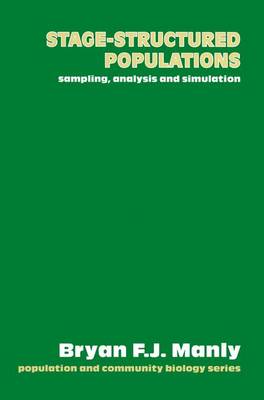Population and Community Biology
1 primary work • 2 total works
Book 4
This text offers not only a summary of the methods of data analysis which are applicable to natural selection, but also attempts to provide an historical context. Examples are an important feature and have been carefully selected from the research literature. The practical aspects of interpretation and analysis are stressed, as is shown by the inclusion of statistical appendices, computer program listing and worked examples. It should also be of interest to statisticians and biometricians.
Part of a series which explores many facets of population biology and the processes that determine the structure and dynamics of communities, this book is concerned almost entirely with statistical modelling. The various approaches to the modelling of biological populations are defined into three categories in this book namely mathematical, statistical and predictive modelling. Mathematical modelling is largely concerned with developing models that capture the most important qualitative features of population dynamics. Statistical modelling is driven by the needs of data analysis. Often, practical considerations will dictate the type of data that can be collected on a population and the primary interest is in using the data to estimate important population parameters. Predictive modelling is generally carried out to solve some real practical problems, is often rather complicated and consists of submodels for different components of the population dynamics, with the parameters of these submodels estimated from field data and laboratory experiments.
Most of the models that are discussed are introduced solely because of their potential use for analyzing data in order to gain information about specific populations. In some cases, the models have been used or could be used for theoretical investigations of general principles of population dynamics. Some examples of predictive models are discussed, but only to emphasize the uses of the simpler statistical models as part of these more complicated ones.
Most of the models that are discussed are introduced solely because of their potential use for analyzing data in order to gain information about specific populations. In some cases, the models have been used or could be used for theoretical investigations of general principles of population dynamics. Some examples of predictive models are discussed, but only to emphasize the uses of the simpler statistical models as part of these more complicated ones.

